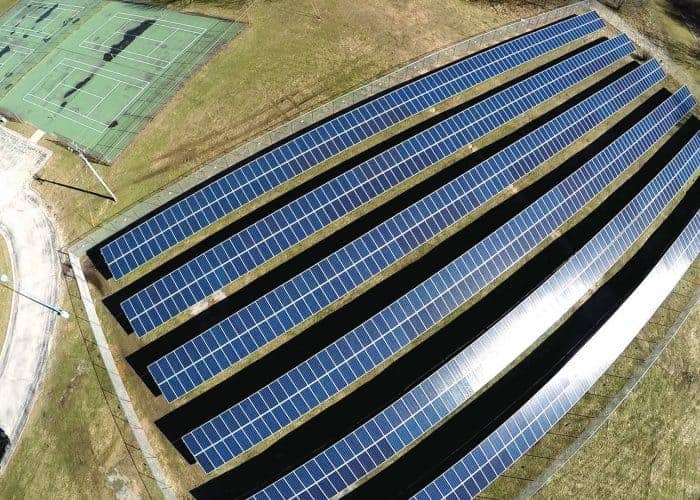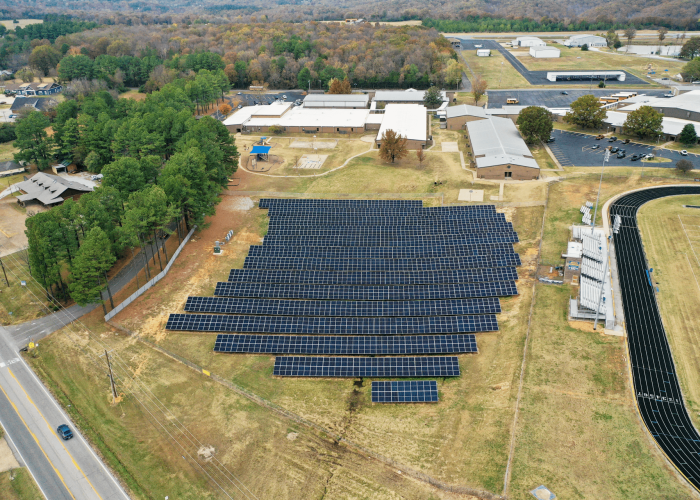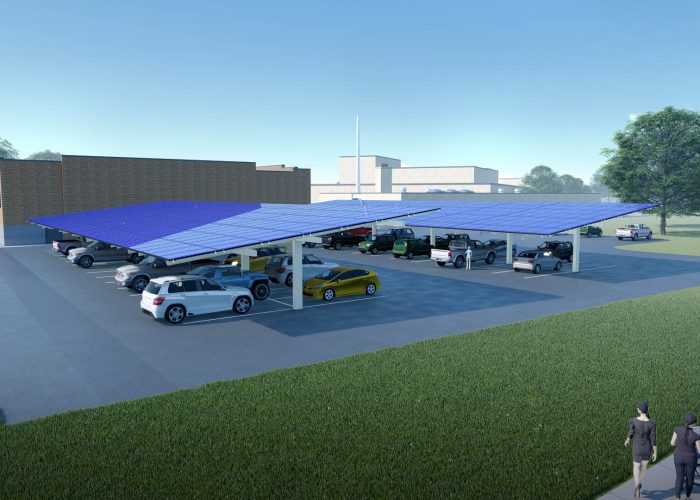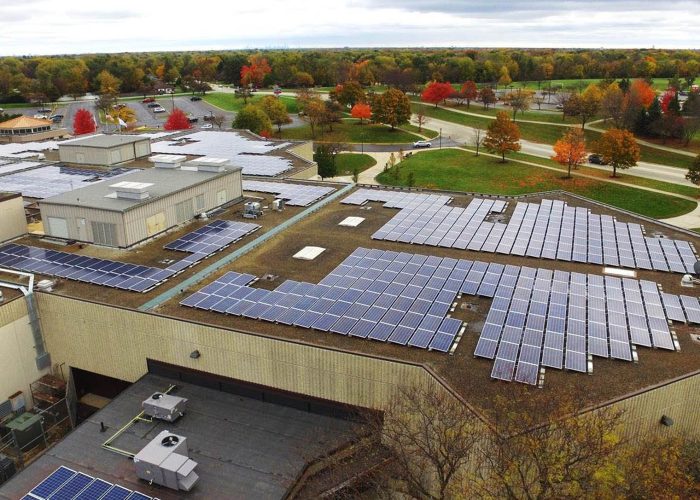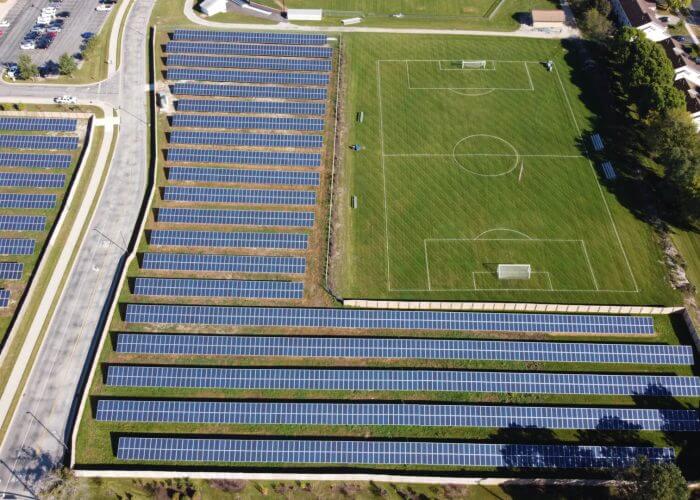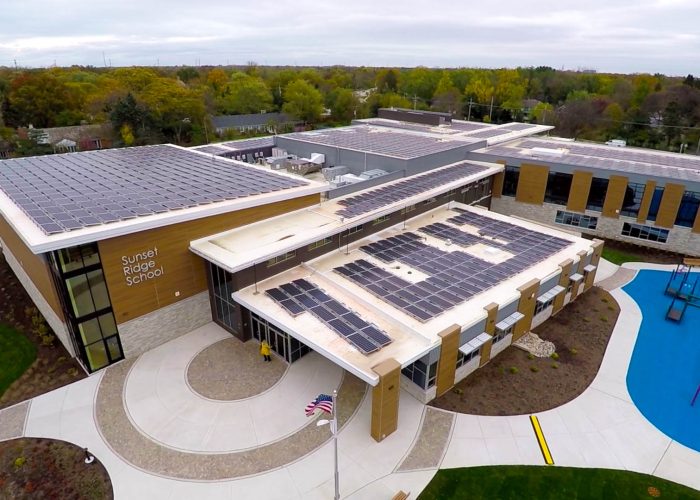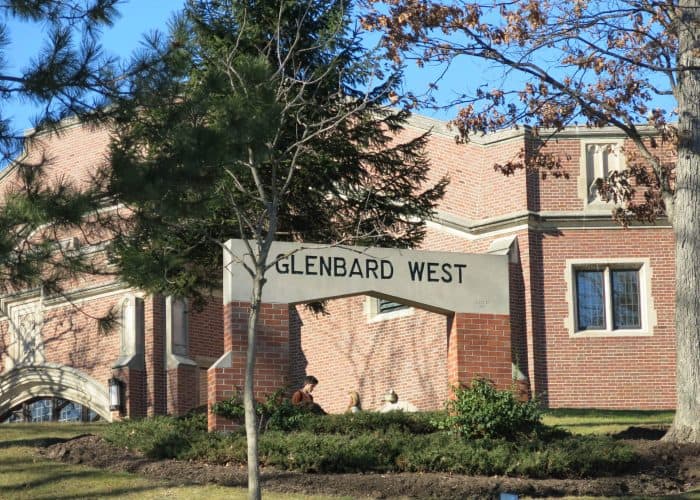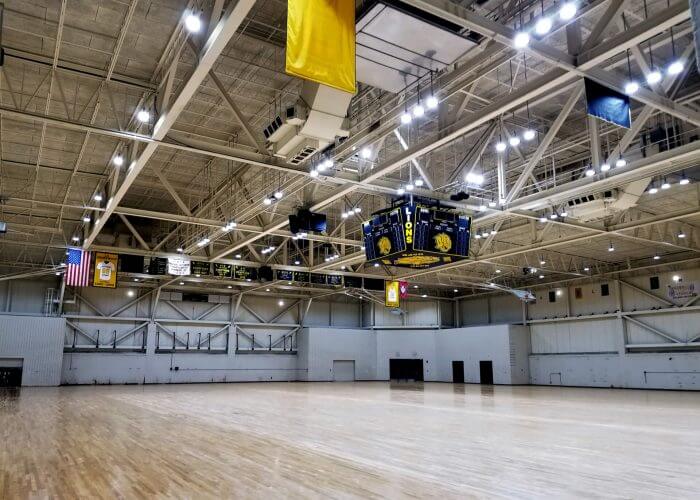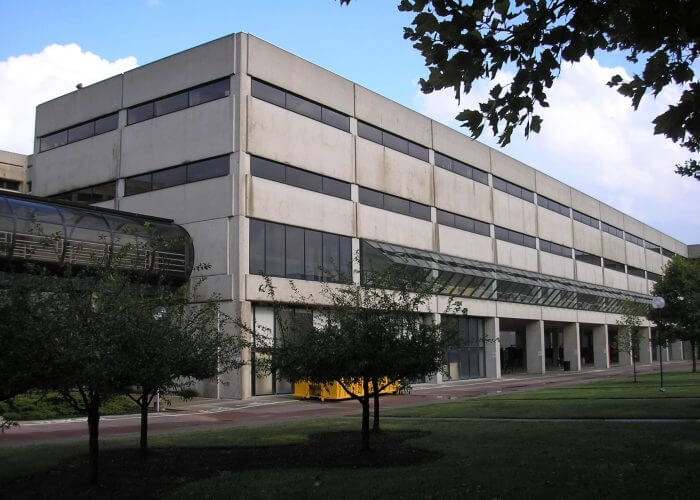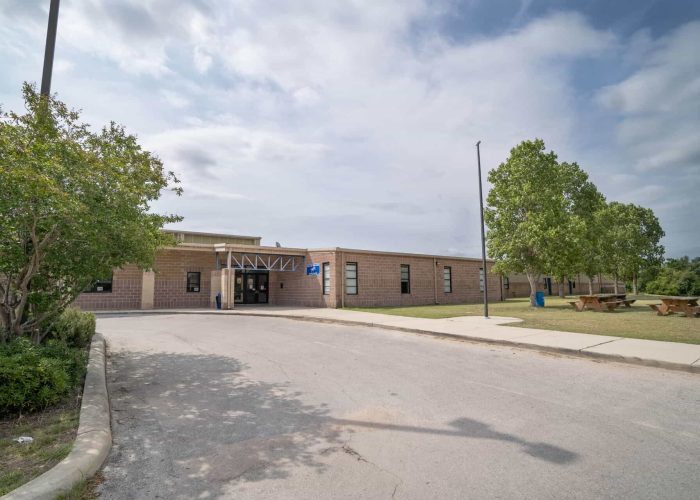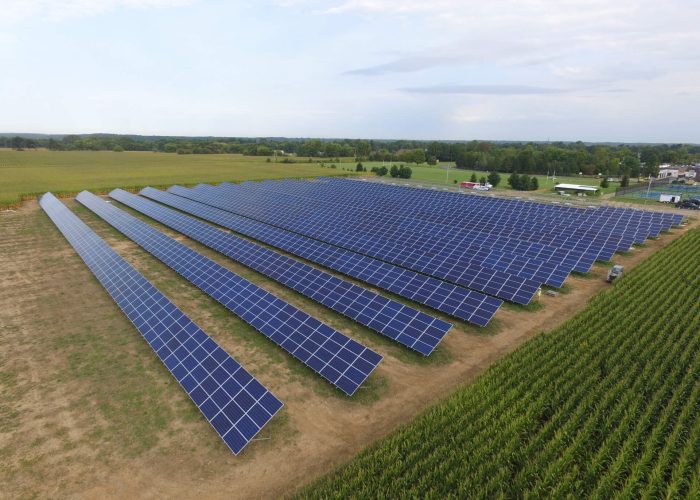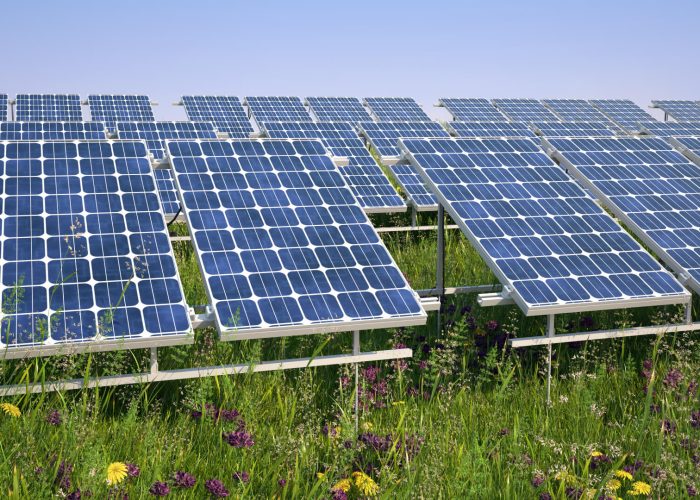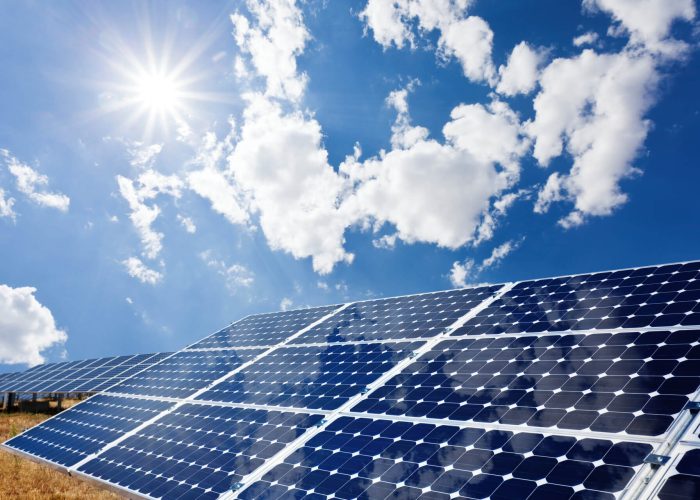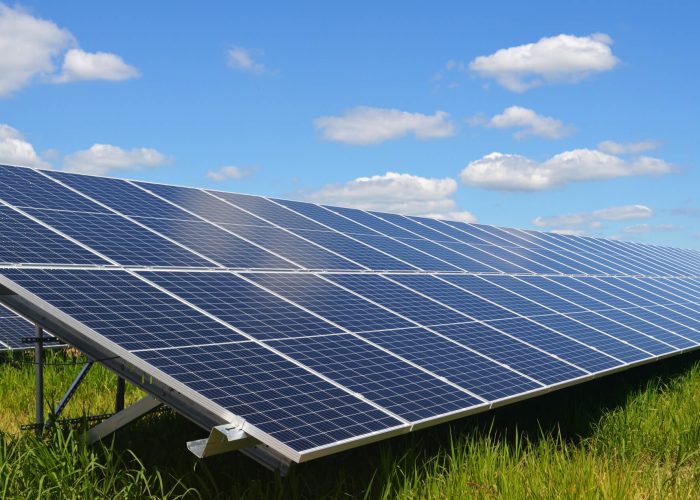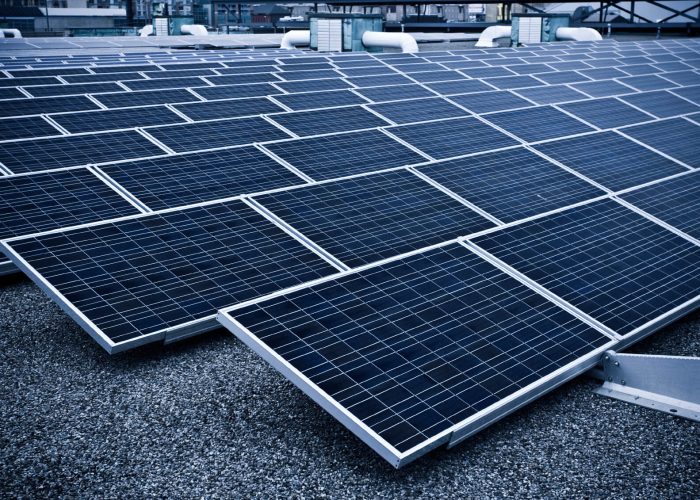We partner with our clients to determine what solar solutions can have the biggest impact on the bottom line and contribute to a sustainable future.
With the dramatic decline in manufacturing, installation and equipment costs, solar photovoltaic (PV) and solar thermal are more cost-effective than ever before. Solar systems have a 25-year power production warranty and an average lifespan of 50 years or more, so an investment in solar saves millions of dollars in utility costs in the long run.
Budget-Neutral Project Financing
Project costs may be financed and are repaid with guaranteed savings through an energy savings performance contract.
Engineered Design and Guaranteed Results
Our in-house solar development and operations team of professional engineers and project managers take a comprehensive approach to assure holistic, right-sized and integrated design, installation, and performance monitoring and reporting. We also take a proactive and thorough review of your energy usage and trends so that designs meet your long-range energy master plan and needs.
Once a location and design is determined, we will finalize your financial model, making sure your system is sized for maximum savings. Moving forward, Performance Services will offer multiple financing options to find the best fit possible for your organization, including providing classroom learning grants with every solar project.
Comprehensive Solar Power Process

Through our years of solar experience, we understand that moving forward with solar energy solutions is an important decision. Performance Services is here to support you and your stakeholders in every way possible. The solar process should never be a burden on your organization, as we strive to make your facilities high performing and cost-effective.
In Texas, Performance Services is not licensed to perform installation and interconnection services but can provide clients with a list of Texas-licensed ELC contractors who can.
Solar Options
-
01
1
Roof Mount Solar Installation
Most public buildings are equipped with plenty of roof space in which solar panels can be installed. As long as the roof is structurally sound and strong enough to withhold the weight of the panels and receive consistent contact with sunlight, it qualifies for solar panel installation.
The roof mount system is the most common type of solar installation. Electrical wires are threaded underneath the roof and attached to solar panels installed on the roofing structure.
-
02
2
Parking Lot Solar Canopy
Public owners can place solar panels on top of shade structures in their parking lots, generating solar energy while also shading cars from the heat of the sun. These can be placed on top of existing canopies that are strong enough to support the weight of the panels. Special structures can be built for this purpose as well. Because most may require new construction, this may be the most expensive solar option.
-
03
3
Pole Mount Solar Installation
If a building does not have a large enough structure to hold solar panels, they can be installed on the ground or on the sides of buildings through pole mounts. Large steel beams are bolted to a building or underground to support solar panels and angle them for optimal solar energy collection.
-
04
4
Ground Mount Solar Installation
Ground-mount panels are similar to pole-mounted solar power systems, but they are attached to metal stands and placed on flat outdoor surfaces, such as an open field. These types of solar energy systems are typically the easiest and least expensive to install. Many ground-mounted solar panels can also be placed on single-axis or dual-axis systems which move to follow the rotation of the sun, which allows them to collect more solar energy throughout the day.
-
05
5
Solar Shade Awnings
Canopies and awnings that provide shade can be used to hold solar panel systems. This can include canopies over stadium seating, playgrounds, or other locations that receive lots of sunlight.
Benefits of Solar Energy
-
01
1
K-12 SCHOOLS
Solar energy offers a variety of benefits for K-12 school stakeholders. Schools can achieve net zero or a significant reduction in utility bill costs, and solar power can result in positive cash flow in the first year of operation depending on the method of financing the project.
Teachers and students will also benefit from a solar installation with STEM-based curriculum. Performance Services is a Partner for the National Energy Education Development (NEED) Project to provide K-12 curriculum, teacher training, web-based energy data for export and use in the classroom and student Energy Challenge events.
-
02
2
HIGHER EDUCATION
There are three groups of stakeholders that benefit from utilizing solar energy on campus. The first is the Administration and Board of Trustees, as solar is a long-term investment in the campus’ energy usage, and solar programs can reflect the organization’s mission and identity.
The facilities department are able to manage the delivery of cost-effective, reliable and environmentally responsible energy sources around the clock. Solar power systems put stakeholders back in control of their buildings.
Finally, students are able to get involved with their campus through environmental awareness and sustainability programs. The renewable energy systems powering the campus will be a point of engagement for the student body.
-
03
3
MUNICIPAL GOVERNMENT
Solar power enables government leaders to establish a long-term plan for powering the city-owned buildings with reliable, cost-effective power. Renewables also demonstrate concern for the environment and community by integrating “green” programs into the city.

